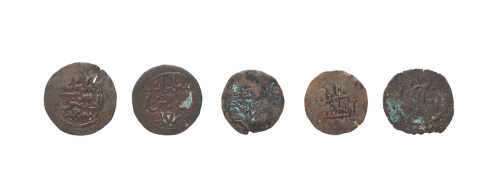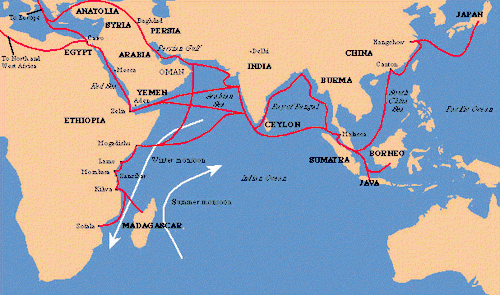


How did coins from Medieval East Africa end up in Australia?
During World War II in the Wessel Islands north of the Australian coast, an RAAF serviceman named Morry Isenburg found a handful of very old coins. Isenburg had the coins identified by an expert, who determined that 4 of the coins were minted by the Dutch East India Company in the 17th century. However, the remaining 5 coins certainly had an especially interesting origin, originating from the Kilwa Sultanate, a Medieval African kingdom which dominated the Swahili Coast of east Africa between the 10th and 15th centuries. The coins themselves range in date from the 10th to the 14th century. Made from simple copper, only two other Kilwa coins have ever been found outside of East Africa, being discovered from a site in Oman and a site in Zimbabwe.
This of course raises serious questions as to how the coins made their way 6,000 miles from East Africa to Australia. Later expeditions to the island have found a shipwreck of the island’s coast, which has yet to be dated or identified. Most likely, the coins have washed ashore from that shipwreck. The island also sports many examples of aboriginal rock art depicting a variety of ships from various places and periods in time. It is quite obvious that the waters off Wessel have been rich shipping lanes for centuries. Trading fleets from Southeast Asia and Indonesia crossed through the region in large numbers. The Dutch traded heavily in the area in the 17th century and first stepped foot in Australia in 1606.
Many enthusiastic historians like to speculate that the coins are proof of Kilwa contact with Australia dating before European contact. They wouldn’t be off base as the Kilwa dominated East African trade, with commercial contacts stretching through the Middle East, India, Southeast Asia, Broneo, Sumartra, Java, and perhaps as far as China. Muslim immigrants and Islamic trade stretched to Southeast Asia and throughout Indonesia. So it’s an extremely plausible theory that Kilwa ships sailed in Australian waters before European colonization. Unfortunately, the finding of Medieval Kilwa coins found intermixed with 17th century Dutch coins cast doubt on this theory. Most likely, the coins were the collection of Dutch, or perhaps Javanese merchants in the 17th century. Then again, there is little hard evidence supporting either theory as to how the coins found their way to Australia. Regardless, the Kilwa coins show that sometimes even the simplest of objects can find their way across the world.






Комментариев нет:
Отправить комментарий